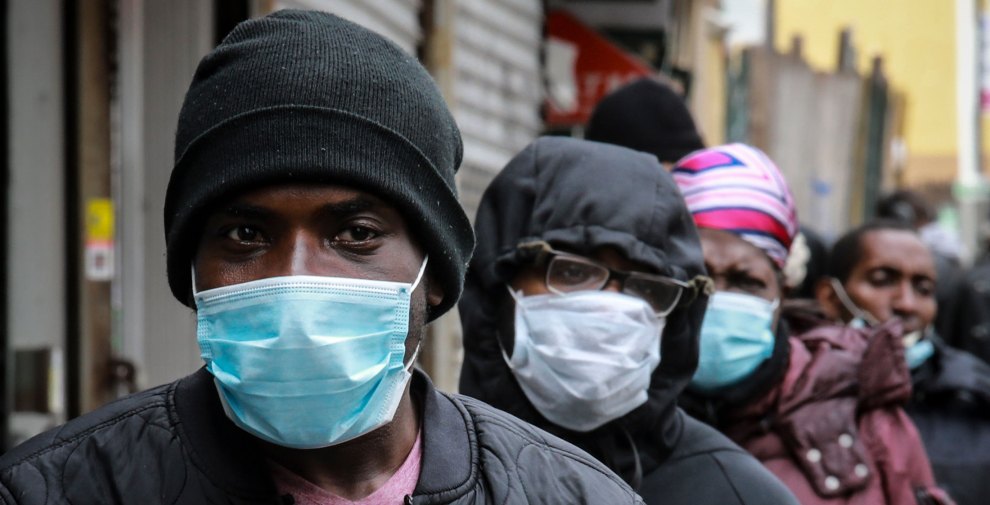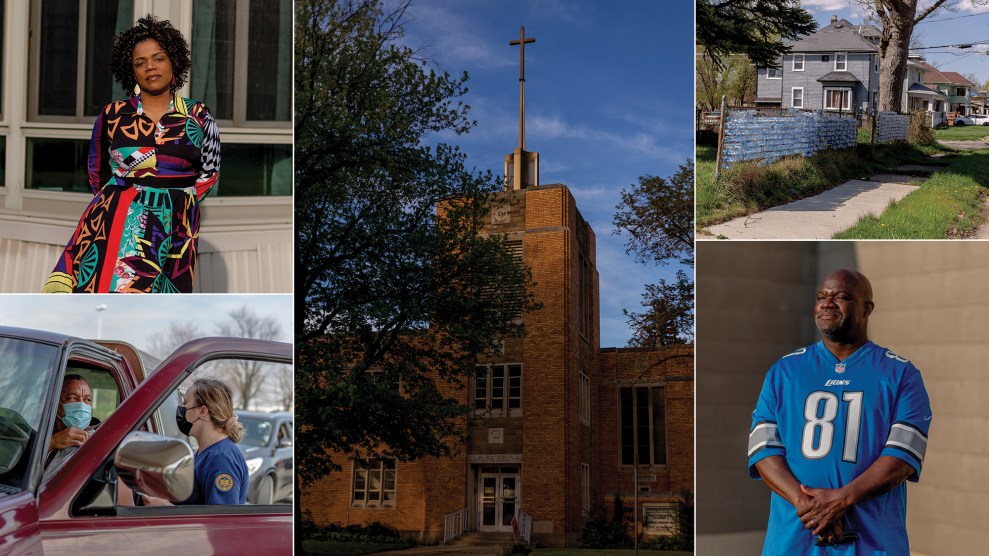
People wait for a distribution of masks and food from the Rev. Al Sharpton in the Harlem neighborhood of New York. Bebeto Matthews/AP
During the COVID pandemic, life expectancy for Black Americans fell by 2.9 years. Latinx Americans, who typically live longer than Black Americans and whites, lost three years of their lives. Now, a new Centers for Disease Control and Prevention study published Friday found that Black, Latinx, and Native Americans/Alaskan Native adults have died at startlingly higher rates during the COVID pandemic than in typical years, illuminating the disparate suffering communities of color have faced in the last year and a half.
In the CDC’s Morbidity and Mortality Weekly Report, researchers looked at the excess mortality incidence rates, a wonky term that means the number of people who have died in a population above their community’s expected number of deaths. They assessed the number of excess deaths per 100,000 people across the US between December 2019 and January 2021 by race and age and observed changes in death trends over the course of the pandemic.
The researchers found that for adults older than 65 years old, Black Americans died at an excess rate of 1,033 per 100,000 people while Latinx adults died at an excess rate of 1,007 per 100,000—a far cry from white Americans, who died at an excess rate of 500.1 per 100,000. And for Black adults over 65 years old, 78.7 percent of excess deaths were directly attributed to COVID. For Latinx adults over 65, the percentage was 85 percent. And for white Americans over 65, that percentage stood at 93 percent.
As researchers zoomed in on younger adults, though, the disparities in excess death rates became starker. While white Americans between 25 years old and 64 died at an excess rate of 51.2 per 100,000, Latinx Americans died at nearly 99 per 100,000 and Black Americans died at a startling excess rate 133 per 100,000. What’s more, excess deaths among Alaskan Natives and Native American adults between 25 and 64 occurred at a staggering rate of 221 per 100,000.
This is a lot to digest. Let me share a graph with you.
The numbers are complicated, but the resulting message isn't. Researchers concluded that the findings could help "guide targeted public health messaging and mitigation efforts to reduce [COVID] disparities" and "highlight the importance of timely data to address inequities in social determinants of health that increase the risk for death from COVID-19 among racial/ethnic minority groups." The CDC study affirmed what Black, Latinx, and Native American/Alaskan Native communities have experienced since early 2020: Unprecedented death and despair, thanks in large part to a pandemic that has exposed just how unequal the country is.













